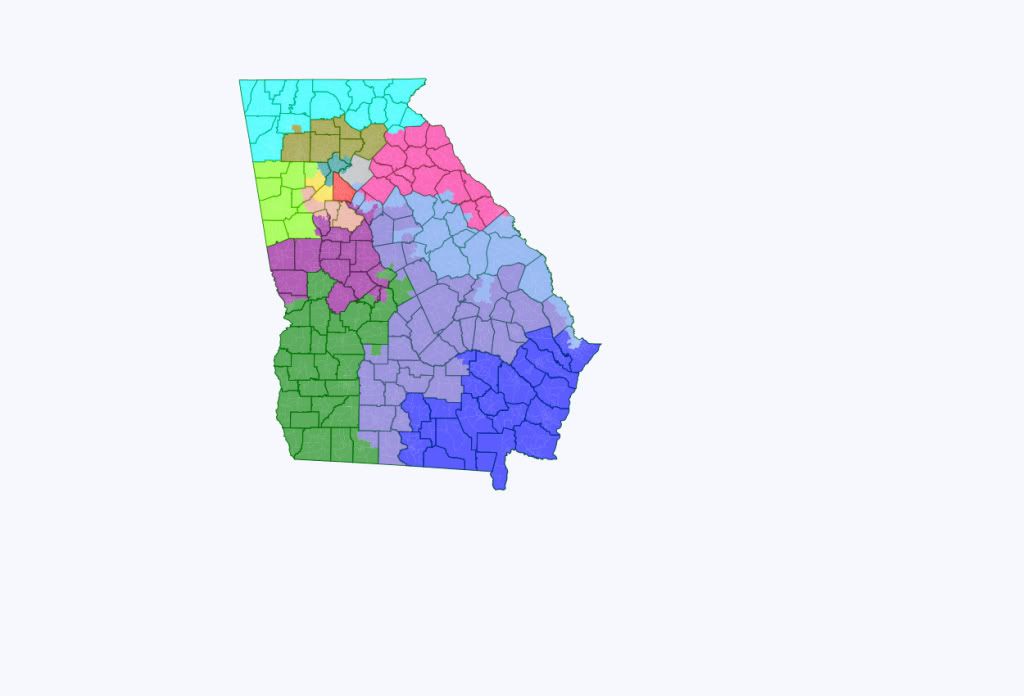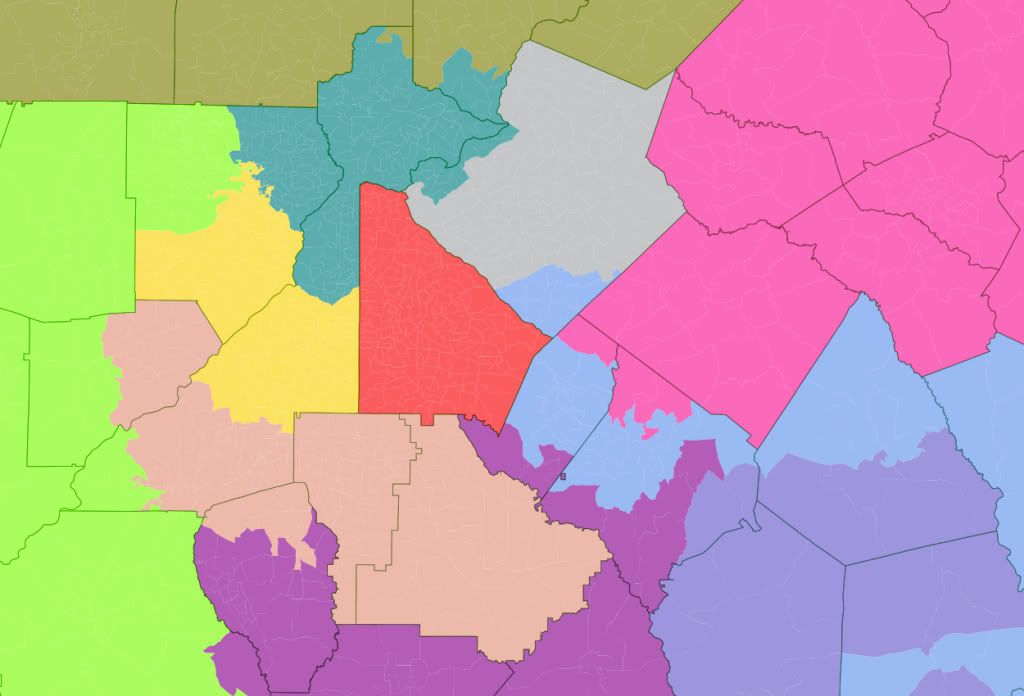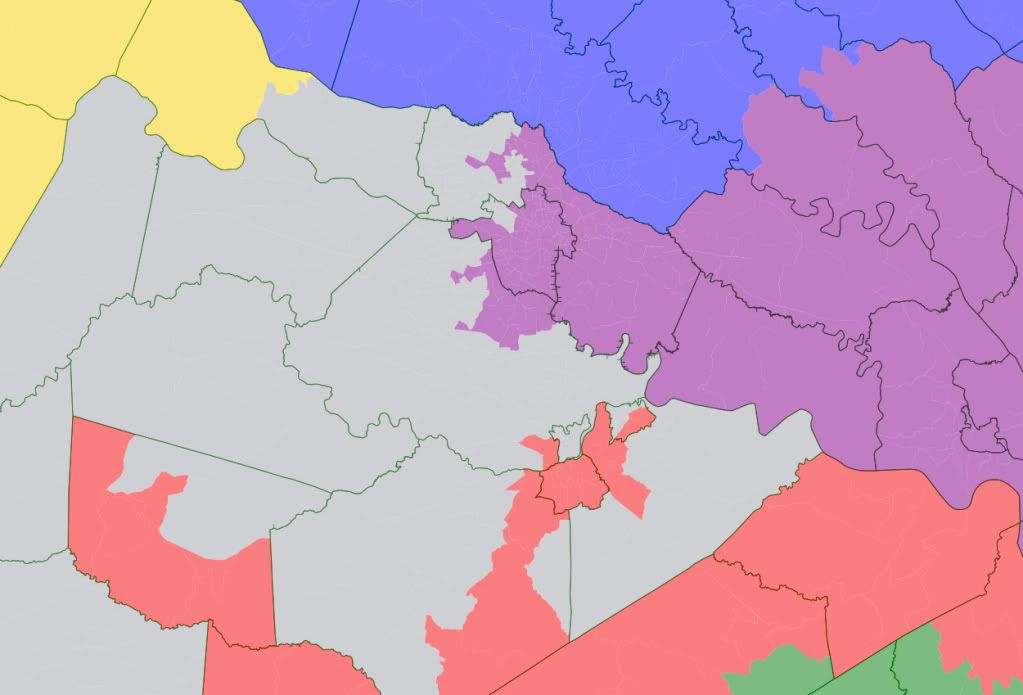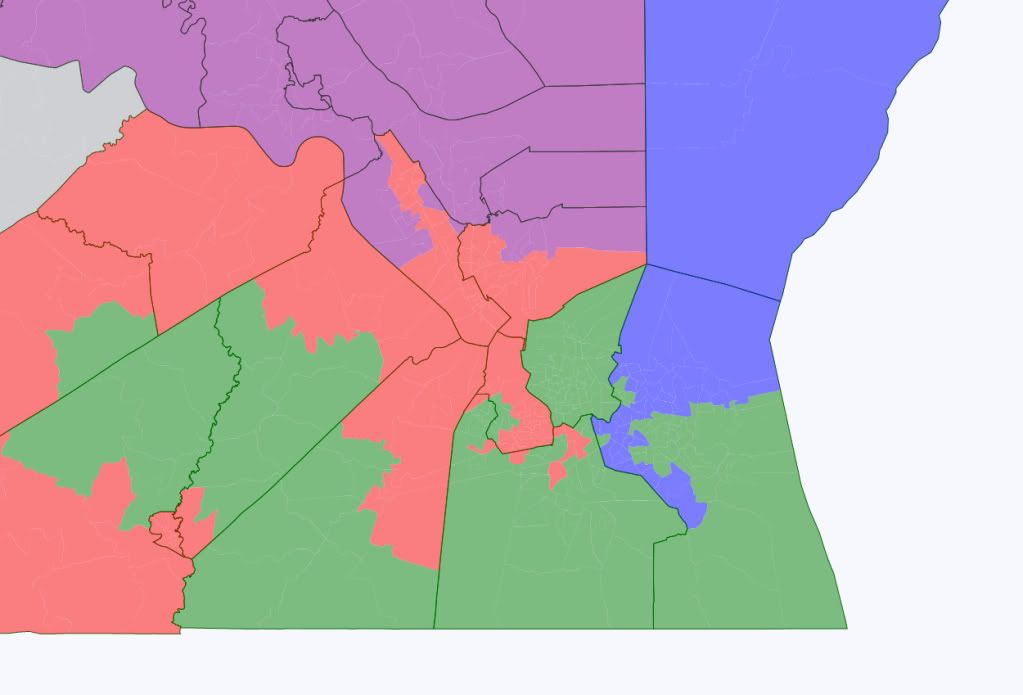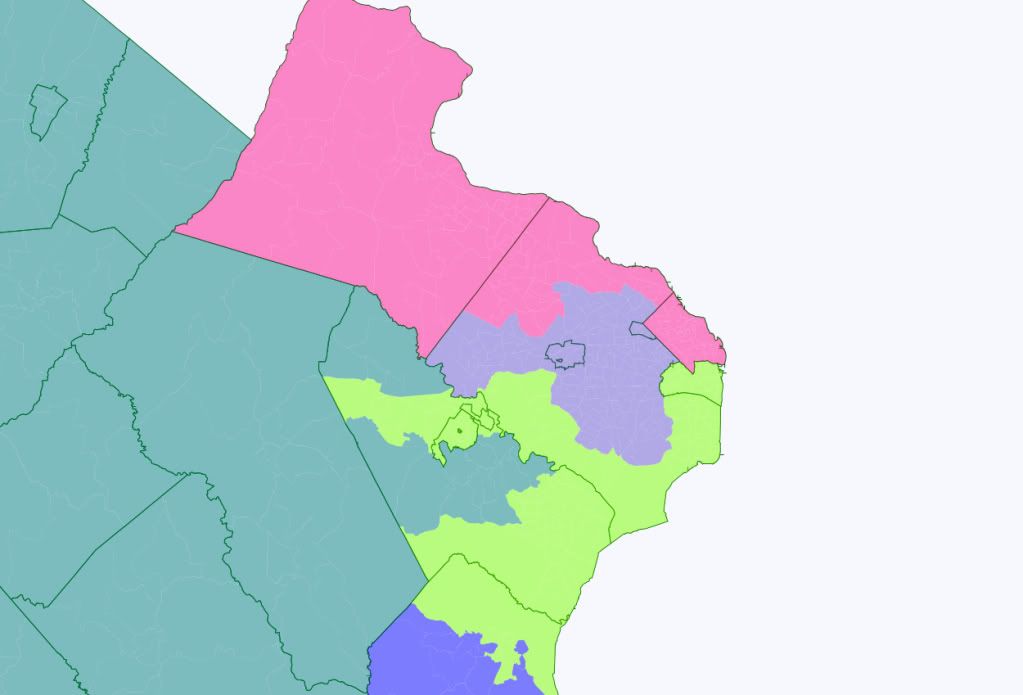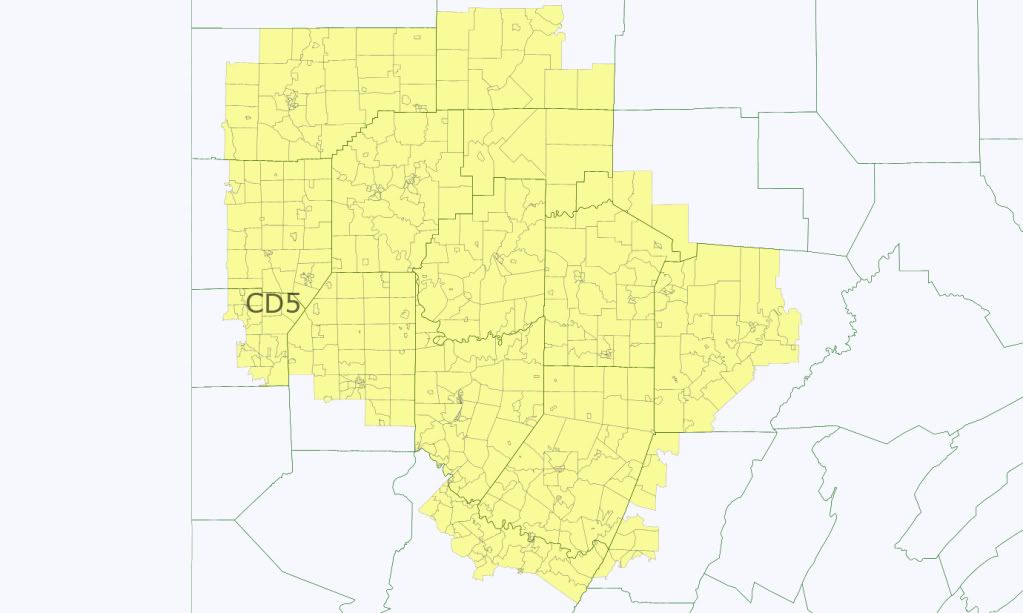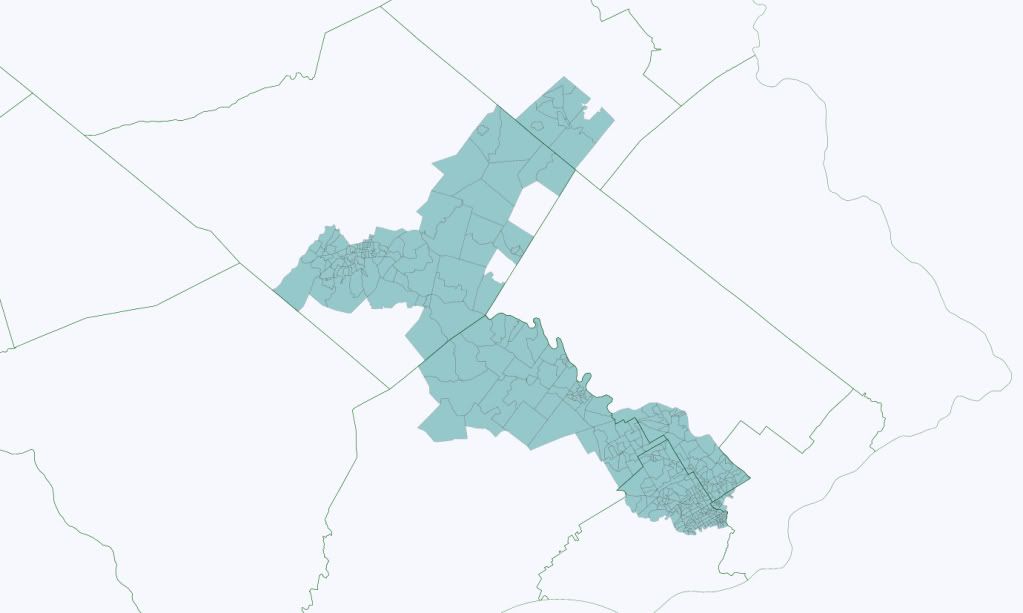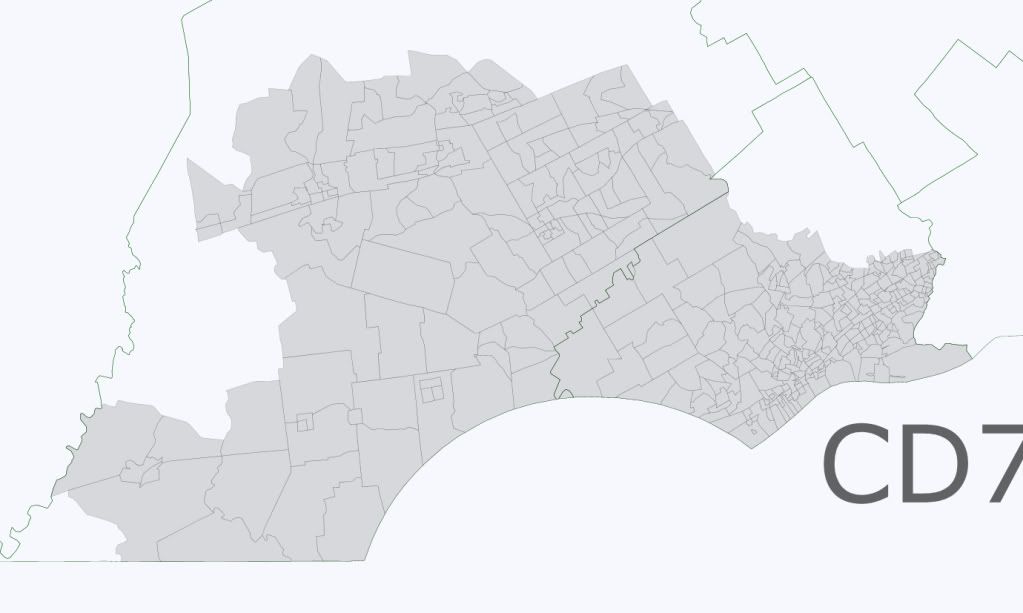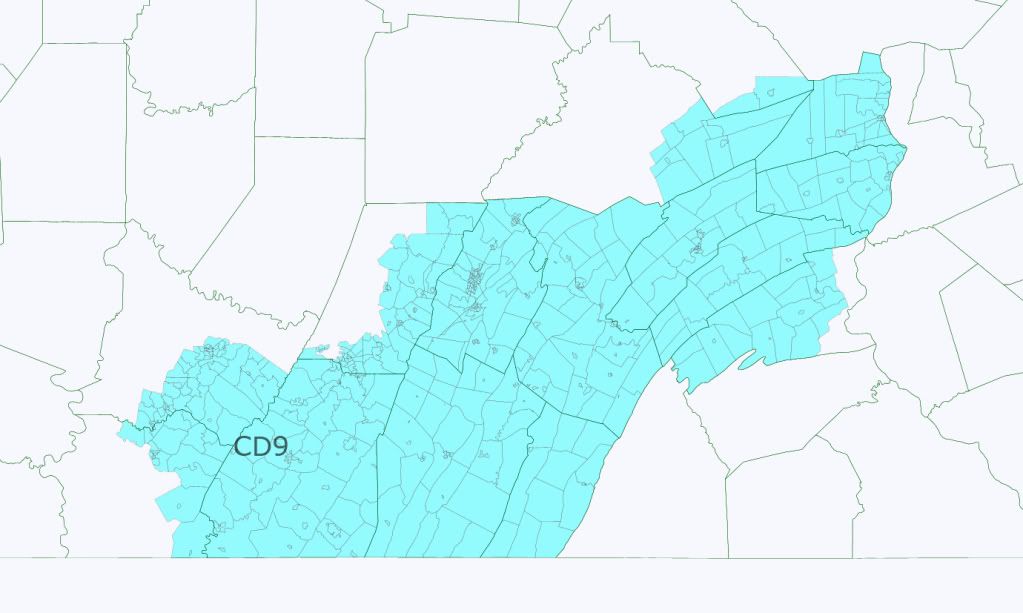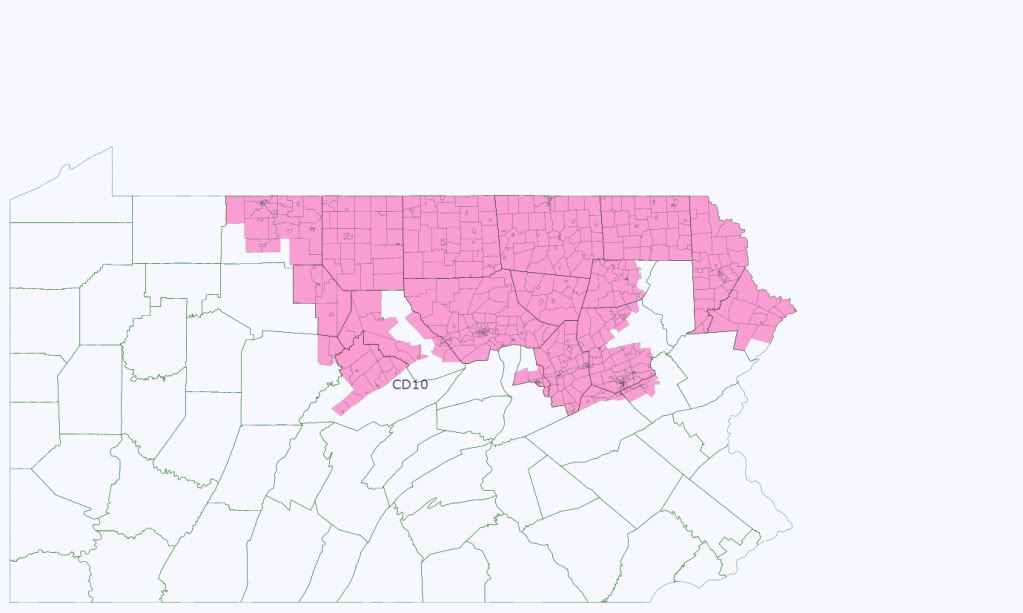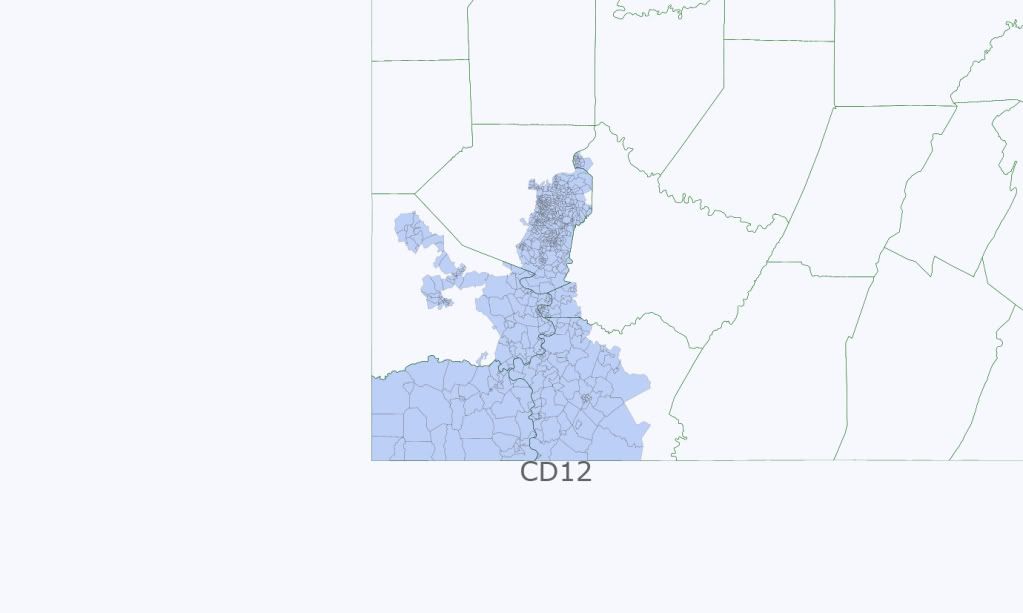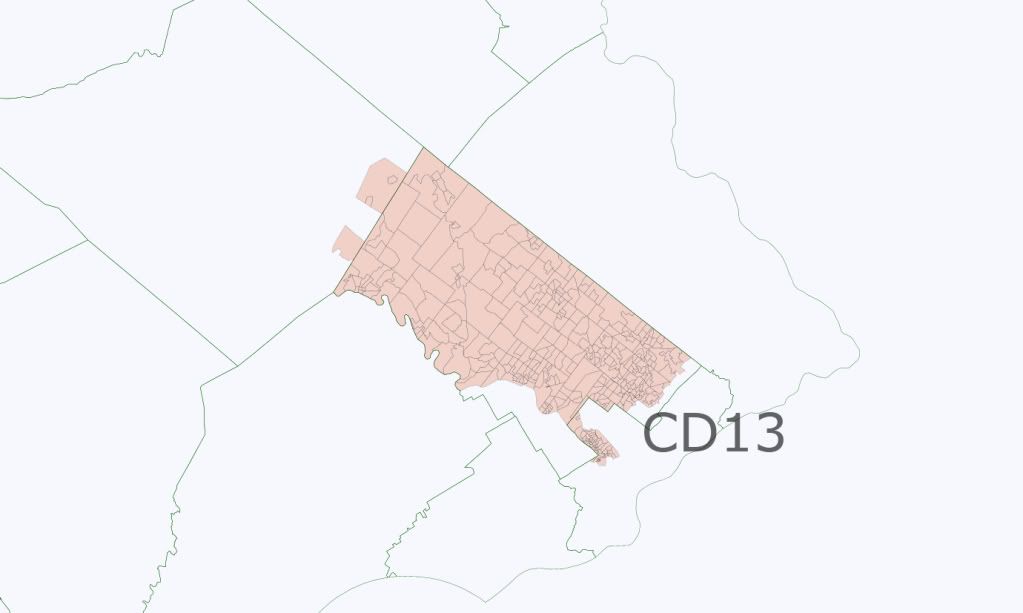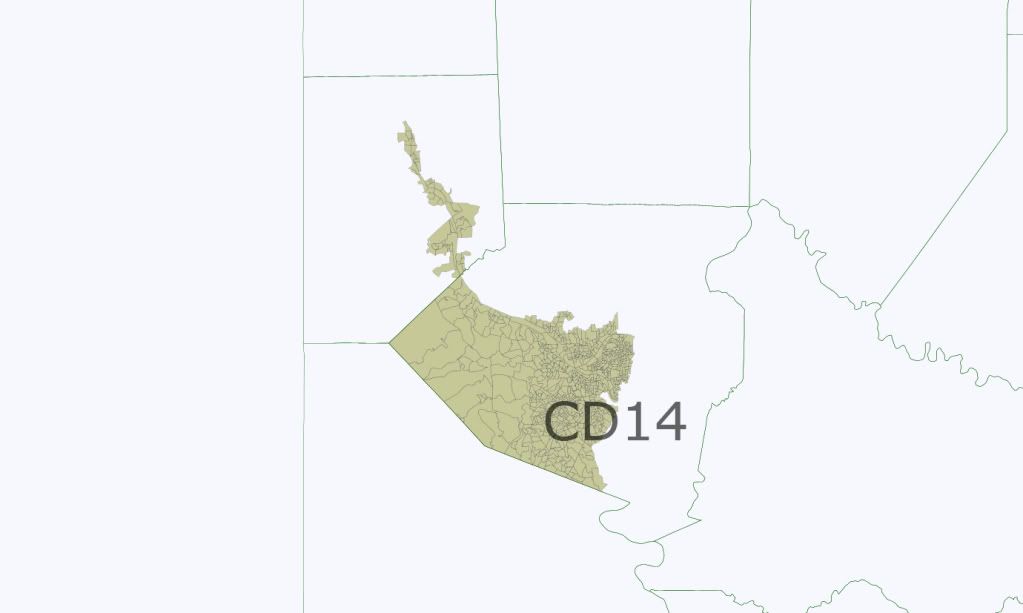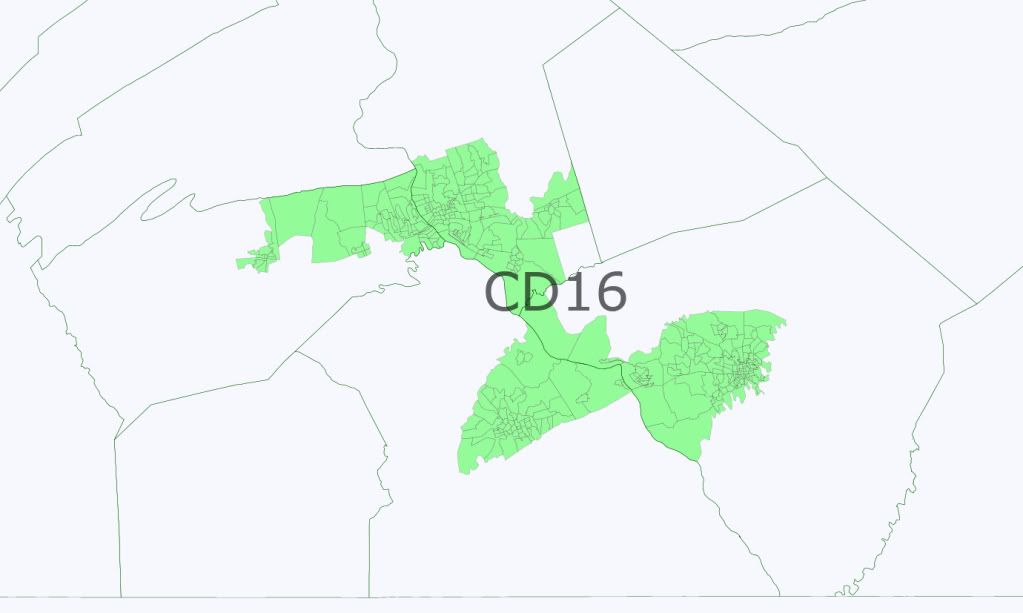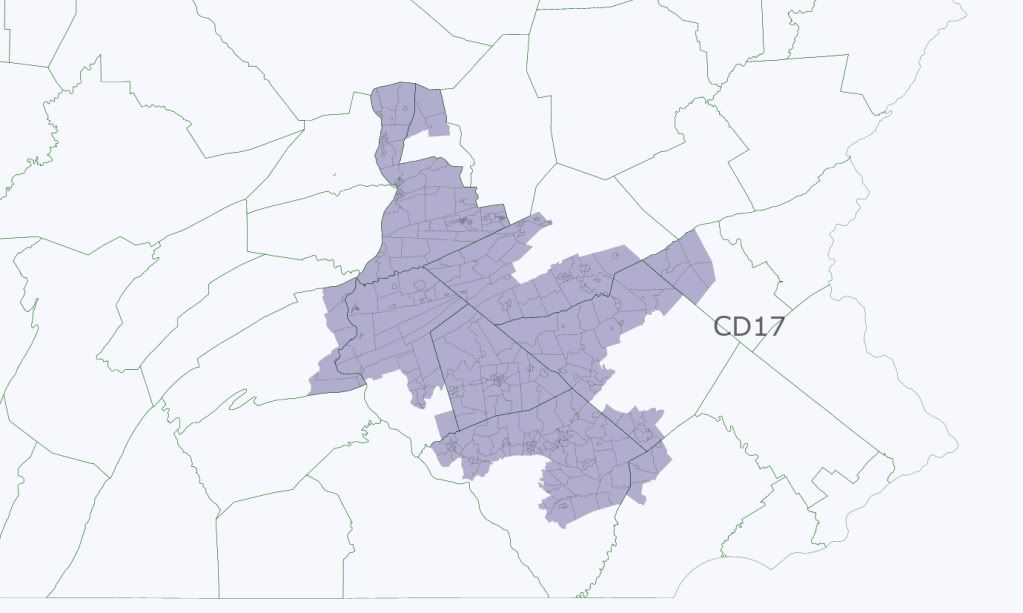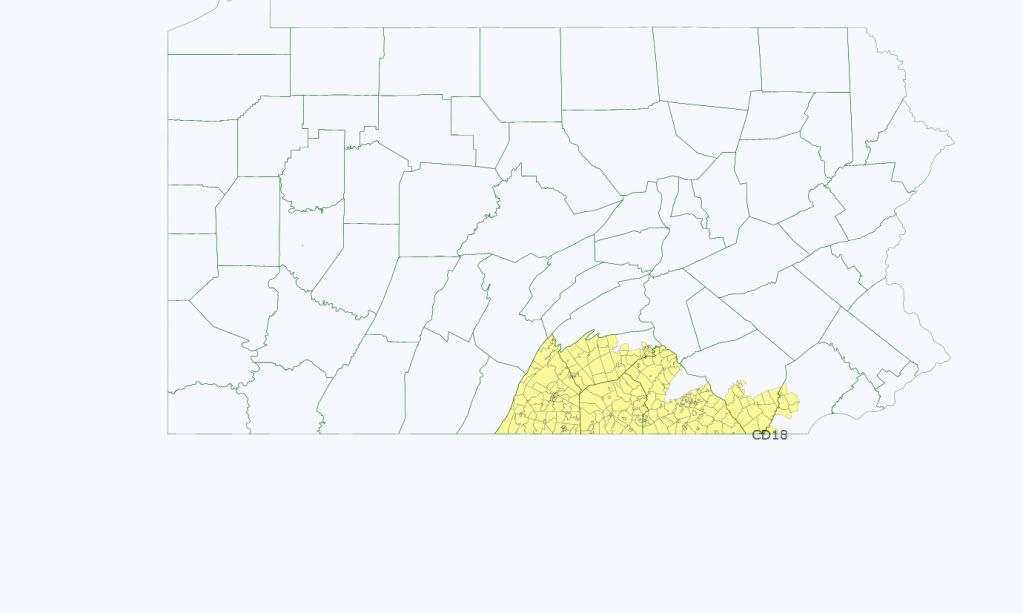Over the past few weeks, I’ve seen numerous maps which have tried to draw Pennsylvania (where Republicans have total control) 13R-5D, or even 14R-4D. After trying several maps out for myself, I’ve decided that aggressive action by the Republicans, while not impossible, will be foolhardy.
The 2000 Republican redistricting is remembered by some as a success, but in many ways, it was a failure. PA-13 and PA-17 were both supposed to be Republican seats when drawn. And as we all know, PA-3, PA-4, PA-8 and PA-7 ultimately were too Democratic to be held consistently through the decade.
Republicans will surely wish to ensure that one Democratic incumbent loses their seat (most likely Mark Critz). Knocking off Jason Altmire isn’t too difficult either – there are plenty of deep-red Republican areas to draw into his district, and western Pennsylvania outside of Pittsburgh is swinging to the right pretty rapidly. However, eastern Pennsylvania has been trending towards the Democrats for just as long. The Republicans now hold four Democratic-leaning districts in the east. Not enough Democrats can be siphoned into PA-1, PA-2, and PA-13 to make the seats safe.
Compounding the issue is Tim Holden. He has been a formidable campaigner, repeatedly winning re-election in a Republican-leaning district. Any attempt to trade his seat for a new safe D district scooping up Democrats the northeastern part of the state makes it uncomfortably possible the Republicans will hand the Democrats a free gimme and Holden will survive.
Therefore, I’ve decided a 12-6 breakdown is the best the Republicans can reasonably manage which protects almost all of their incumbents (barring a major scandal), for the remainder of the decade. Really, a two-to-one margin for Republicans, given they have consistently lost the state on the presidential level since 1988, is pretty damn gerrymandered already – especially if they trade four somewhat unsafe seats for much safer ones.
In the end, I think the map will have these broad outlines:
1. Eliminate Mark Critz’s seat.
2. Move PA-12 to the Philly burbs. It becomes a vote sink for Democratic areas which do not fit into the other three Philly-area districts.
3. Make Tim Holden’s district as Democratic as possible, which will help shore up both PA-11 and PA-15 for incumbents.
4. In order to ensure that no Republican incumbent loses a seat, Altmire has to go. His seat gets dismembered, with his hometown in PA-14, but his base split between PA-18, PA-9, and PA-3. Thus he’ll have to move, and face an uphill battle regardless. PA-4 moves to Dutch Country and replaces PA-19.
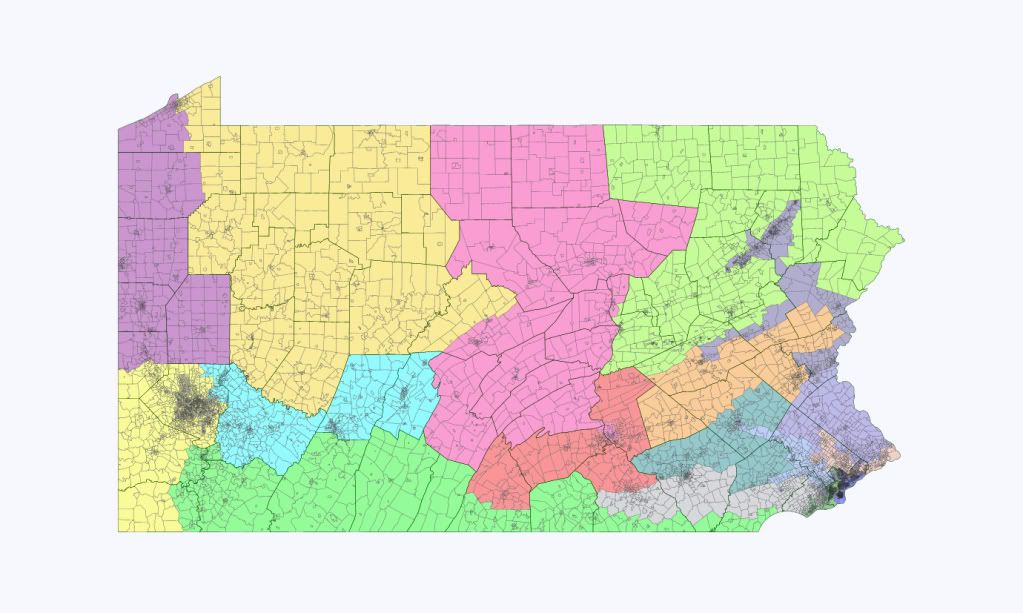
Here’s the statewide view. All Republican incumbents keep their hometowns in their seats, from what information I could gather. Some districts do change composition rather dramatically however, particularly in the east.
Details by district:

PA-1
Minority-Majority (39% White, 34% Black, 19% Hispanic, 6% Asian)
82% Obama, 17% McCain (D+28)
I do not know Bob Brady’s exact address, so I am not sure if his home is in the district. The district sheds its extension into Delaware county, and expands a bit into Northeast Philly. Still highly safe of course.

PA-2
Majority Black (63% Black, 29% White, 4% Asian, 3% Hispanic)
90% Obama, 10% McCain (D+36)
Again, I am not sure of Chaka Fattah’s exact address, but the core of black west Philadelphia remains intact. The district takes in predominantly black areas of Delaware county, and also a few heavily-Democratic white areas like Media and Glenolden which don’t fit well into PA-12.

PA-3
53% McCain, 46% Obama (R+7)
The district sheds half of Erie, in order to become less Democratic, and picks up more Republican areas to the south which were formerly part of PA-4. It does contain a fairly substantial part of Altmire’s old district, and is only marginally more Republican than his old district, but he would have to move to establish himself here.

PA-4
56% McCain, 43% Obama (R+10)
This is really a replacement for the old PA-19. It’s centered around Harrisburg, although Harrisburg itself is drawn into PA-10 in order to stop this district from being swingy. Should remain a solid Republican seat.

PA-5
53% McCain, 45% Obama (R+8)
This district migrates to the west, picking up half of Erie, along with some of the outer reaches of southwestern Pennsylvania. It’s slightly more swingy than it was before with the inclusion of Erie, but should remain a solid Republican seat.

PA-6
51% McCain, 48% Obama (R+5)
Marginal parts of Chester and Montgomery are shed, along with the city of Redding. In exchange, it takes in more of rural Redding county, and the northern parts of Lancaster county. Although the right Democrat could take this, it is a far safer district than it was.

PA-7
52% McCain, 47% Obama (R+6)
Again, the district shifts west. It takes on parts of Chester, Lancaster, and York counties, while shedding the most Democratic parts of Delaware, along with the salient into Montgomery. This should be a fairly secure Republican seat.

PA-8
51% Obama, 48% McCain (R+3)
There were logical limits to how well this seat could be gerrymandered. It has shed southern Bucks, and picked up in exchange the most Republican parts of Montgomery, along with a Republican-leaning strip of hills in the Lehigh. However, this area is still very swingy and essentially surrounded by Democrats on all sides, making further improvement difficult. Compounding issues, Mike Fitzpatrick is from Levittown, in the far south. Levittown is not a real municipality, it is split across three different townships. Given I didn’t know where precisely he lived, I decided to leave Middletown in PA-8, which is marginally less Democratic, while putting Bristol and Falls into PA-13. Democrats will probably take this seat sometime during this decade if current trends continue, but it should be the Republicans’ only loss.

PA-9
58% McCain, 42% Obama (R+11)
This district changes complexion dramatically, from being based in the Central PA mountains to being mainly based in the Pittsburgh exurbs, with a salient heading towards Johnstown and Altoona. It is still heavily Republican. Mark Critz finds himself in this district, and out of a job. A small amount of Altmire’s old district is in PA-9 now, but I think it will be the least likely option for him to take.

PA-10
53% McCain, 46% Obama (R+7)
The district moves to the west and south. It is not an overwhelmingly Republican seat, due to the inclusion of State College and Harrisburg, but is still Republican enough to remain safe.

PA-11
52% McCain, 46% Obama (R+7)
Much of the Wyoming valley has been shed, as it was too full of Democrats for Lou Barletta’s comfort. In its place, much of the “Northeast woods” of the state have been added. The district should be a pretty good fit for Lou Barletta’s moderate stances.

PA-12
63% Obama, 36% McCain (D+10)
This entirely new district more or less follows the Schuykill River, picking up Democratic votes from Philly all the way to Redding. It’s an interesting question who in the state house or senate will step forward to run for this seat.

PA-13
63% Obama, 36% McCain (D+10)
The district retains a focus on Montgomery county, but sheds much of the northern parts of the county. It also loses much of Northeast Philly, and gains lower Bucks.

PA-14
68% Obama, 31% McCain (D+14)
This district is not quite as Democratic as it could be, as it draws in a few Republican areas to ensure Jason Altmire will live in the district. If the Republicans are lucky, he may try to primary Mike Doyle (although I think he would lose). It is otherwise broadly similar to the old Pittsburgh-based district.

PA-15
50% Obama, 49% McCain (R+4)
This is the other Republican district which could potentially be endangered. The problem is incumbent Charlie Dent lives in heavily Democratic Allentown. If I knew precisely where in Allentown he lived, I could shunt most of the city into PA-17, and probably improve the district to R+6 or R+7.

PA-16
57% McCain, 42% Obama (R+12)
This district, as odd as it seems looking at it, was not constructed mainly as a gerrymander. The incumbent is unfortunately in Chester county, but the old base of Chester and Lancaster was needed in order to make PA-6 and PA-7 into solid Republican seats. Thus the seat goes far, far to the west, traveling almost the entire length of the southern border of the state. In southwestern Pennsylvania, it does helpfully sop up Democratic voters in the Mon valley who would otherwise cause issues for Tim Murphy.

PA-17
61% Obama, 38% McCain (D+8)
Since it’s impossible to ensure Tim Holden is defeated, instead the new PA-17 packs in as many Democrats into his seat as possible. The only old part of the seat is a small salient into Schuykill county to grab his hometown. Indeed, it’s plausible he’d be vulnerable in a primary, but he’d have an easier time running as an unknown incumbent in an open seat primary than he would moving and picking more Republican PA-15 which has most of his old base. My bet is he stays put.

PA-18
53% McCain, 46% Obama (R+8)
The new PA-18 keeps most of Tim Murphy’s base in the South Hills of Pittsburgh intact. It does shed Westmoreland county to PA-9, and takes in a good deal of the old PA-4. The retention of Murphy’s base means Altmire would have trouble gaining traction here. If the seat ended up open, he’d otherwise potentially be competitive.
Thoughts?
